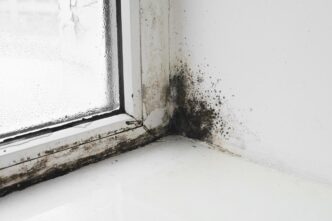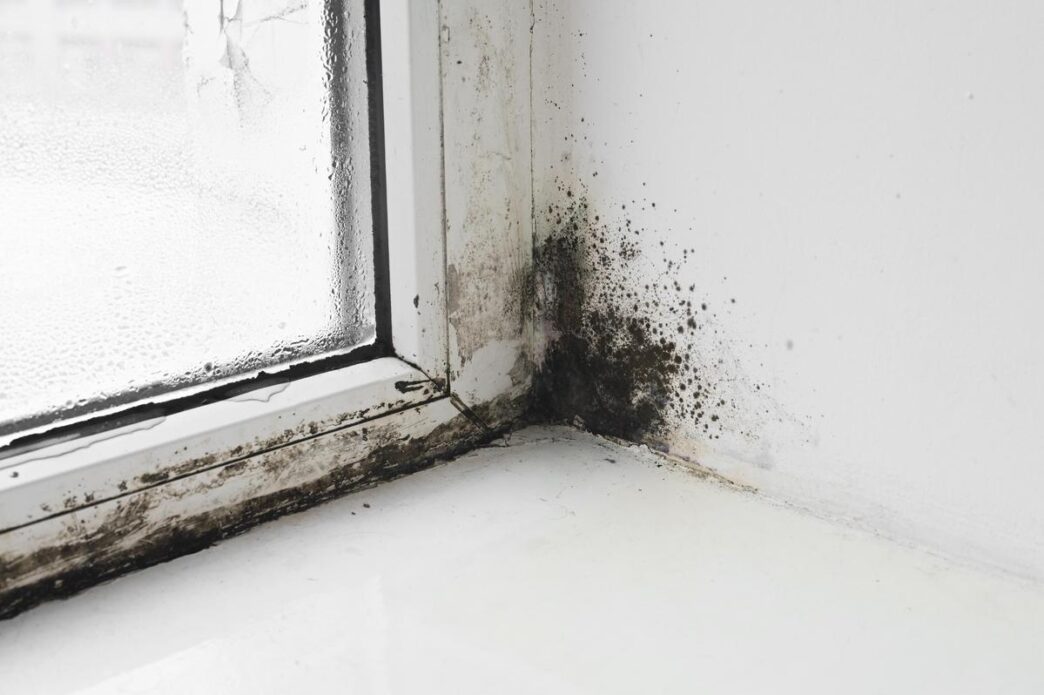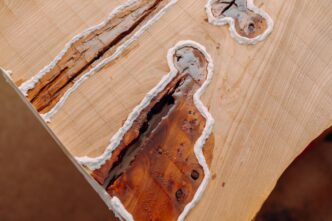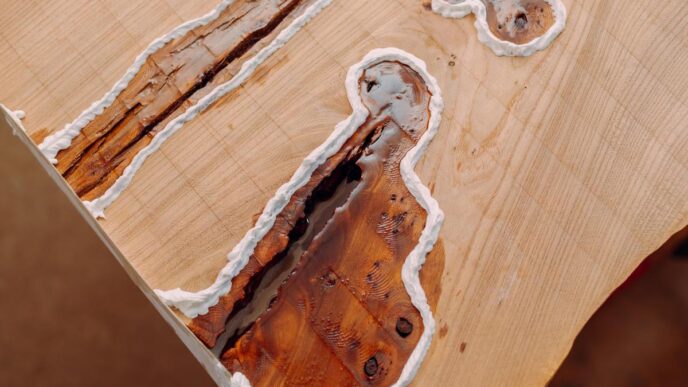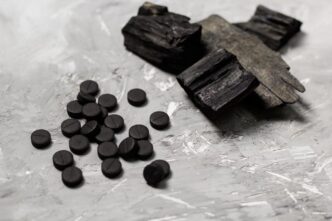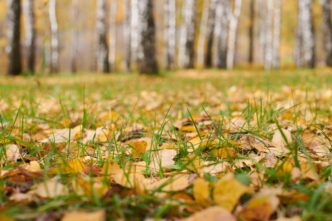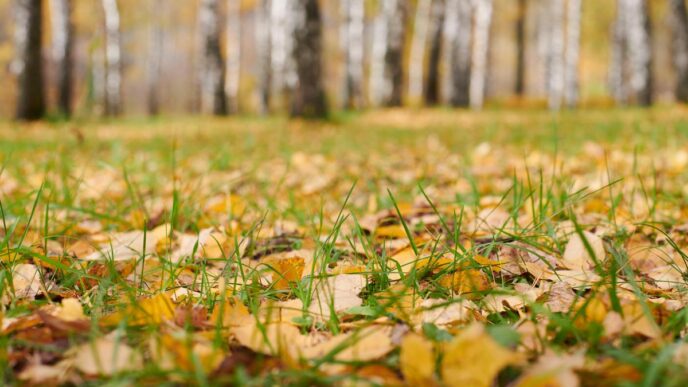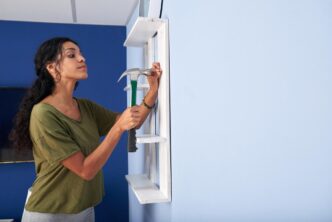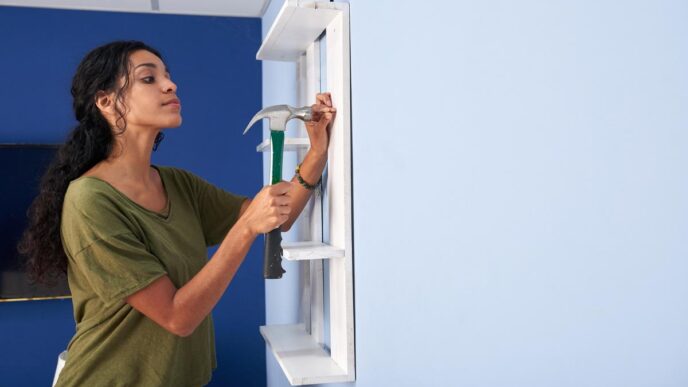Key Takeaways:
- Black mold can cause allergic reactions, respiratory issues, infections, fatigue, skin rashes, and neurological impacts.
- Symptoms of exposure include stuffy nose, wheezing, itchy eyes, skin irritation, and cognitive effects.
- Mold is harmful to the respiratory and immune systems and can lead to asthma attacks and frequent infections.
- Black mold is usually dark green or black, thrives in moist places, and grows on materials like wood and drywall.
- Proper ventilation, reducing humidity, and quick leak repairs prevent mold growth.
- Protective gear is essential for safe removal; professionals should handle large infestations.
- Upon exposure, seek fresh air, clean yourself, hydrate, and consult a healthcare provider if symptoms persist.
- Air purifiers, probiotics, and a healthy diet aid recovery.
Black mold is more than just an unwelcome guest in your home; it's a potential threat to your health. This sneaky fungus releases tiny spores into the air, and when you breathe them in, they can cause serious harm. In this post, I’ll dive into the hidden dangers of black mold exposure—covering how it attacks the immune and respiratory systems and even how it might affect your mental well-being in the long run. Your health is too important to ignore these risks.
What Are the Health Risks Associated with Black Mold?
How does black mold affect health?
Black mold can cause a range of health issues. When you breathe in mold spores, they can enter your body and cause problems such as allergic reactions, respiratory problems, and infections. This is because mold spores are tiny and can spread through the air. In places like basements or bathrooms, black mold grows easily. If you have asthma or allergies, mold can make symptoms worse. Some people may even experience fatigue or skin rashes. Mold allergies can be a common cause of such reactions.
What are the signs of black mold exposure?
The right symptoms can help you identify exposure to black mold. You might notice a stuffy nose, wheezing, or itchy eyes. Some may experience skin irritation or coughs that seem to linger. If you smell a damp, musty odor, or see black spots on walls, it might be present. Early detection of these symptoms is key. Left unchecked, black mold can cause more severe symptoms. Getting rid of mold in these early stages is crucial for health.
How is black mold harmful to your respiratory system?
Black mold is dangerous for your lungs and breathing. Breathing in its spores irritates your airways, leading to issues like a sore throat, nasal congestion, and bronchitis. It is most harmful to children, the elderly, and those with weak immune systems. In extreme cases, it can even lead to asthma attacks. This is why ensuring proper ventilation and fixing leaks are important steps to prevent growth. Resources like the guidelines from the CDC offer useful advice about keeping your home safe.
What Are the Long-term Effects of Black Mold Exposure?
When dealing with black mold, think about more than the smell or sight. Over time, living with this mold can harm your health in many ways. Knowing how it affects us is crucial for staying safe at home.
What are the neurological impacts of black mold?
Black mold can affect the brain. You might feel dizzy or confused. In extreme cases, it can even cause memory loss. These symptoms come from mycotoxins, harmful substances mold releases. Constant exposure to them can take a toll on brain functions.
How does black mold affect the immune system over time?
Mold can weaken your immune system. If you're often sick, mold might be the culprit. People with mold in their homes may struggle to fight off infections. Over time, the body becomes less efficient at battling common germs. Continuous exposure might lead to frequent colds and infections.
What are the psychological effects of mold exposure?
Living with mold can also mess with your mind. It could cause stress or make you feel sad. Some people even experience anxiety in mold-filled environments. Unsurprisingly, breathing in mold's musty aroma while facing persistent health issues can lower one's mood over time. Being aware of these changes is important for both your mind and body.
For more detailed information, visit National Institute of Environmental Health Sciences for reliable resources on mold and health.
How Can You Identify Black Mold?
What are the characteristics of black mold?
Black mold has a dark green or black color. It is slimy when wet and can dry to a powdery form. The smell is strong and musty, like rotting leaves. Black mold likes damp areas like basements or under sinks. It often appears in places with water damage or high humidity.
What tests are used to confirm black mold presence?
You can start by using moisture meters to check for wet spots. An air quality test can also help find mold spores in your home. If you see black mold, it is best to call a professional for mold testing. Special kits can identify specific mold types, but a lab test gives the most clear answer.
How does black mold growth differ from other mold types?
Black mold grows best on materials like wood and drywall. It likes places where water sits for a long time. Unlike some molds, black mold needs high moisture to grow. It does not spread as fast as other molds but needs quick removal. It is a major problem if left alone due to health risks.
To learn more about mold infections, visit Lung Symptoms of Mold Infections and Lung Disease Information.
What Are Safe Practices for Removing Black Mold?
Removing black mold can be risky if not done safely. To protect yourself, certain steps and equipment are necessary.
What personal protective equipment is needed?
When removing black mold, wear appropriate gear. First, use gloves to protect your hands from touching the mold. Next, wear goggles to keep mold dust out of your eyes. A dust mask or respirator is also crucial. It prevents you from breathing in mold spores. Without these, you risk breathing problems or skin irritation.
How to handle black mold removal in bathrooms safely?
In bathrooms, mold often grows due to moisture from showers or leaky pipes. To clean it safely, mix one cap of bleach with a gallon of water. You can also use white vinegar for milder mold. Apply this to the moldy spots and scrub with a brush. Always keep the bathroom ventilated during cleaning. This helps reduce mold exposure. If you spot more mold than you can handle alone, it might be time to call a professional.
When should you consult a professional for mold remediation?
Consult a professional if mold covers a large area. Experts are better equipped to deal with extensive mold problems. Also, if mold keeps returning despite cleaning, a professional can find hidden moisture problems. Pro cleaning ensures the mold is removed thoroughly. This step prevents future health risks.
For more tips on cleaning black mold safely, review expert advice. Mold removal is serious but manageable with the right safety steps.
How Can You Prevent Black Mold in Your Home?
What are the best practices for controlling home humidity?
High humidity makes mold grow fast. Keep your home's air dry. Use dehumidifiers in damp areas. Check humidity levels with a hygrometer; aim for 30-50%. Fix leaks quick and dry spills fast. Avoid drying clothes inside.
How to ensure proper ventilation to prevent mold?
Good airflow stops mold from growing. Open windows for fresh air. Exhaust fans in kitchens and bathrooms help. Keep furniture away from walls to improve air flow. In case of high moisture, vent appliances outside.
What materials are less prone to black mold growth?
Choose building materials wisely. Metal, glass, and plastic do not support mold. Mold loves wood and drywall. Use mold-resistant paint and treated wood. Avoid carpets in basements and bathrooms.
What Should You Do If Exposed to Black Mold?
How to detox from black mold exposure?
One of the first steps if you've faced mold exposure is taking a break from the source. Start by getting fresh air to help your lungs clear some spores. Clean your skin and clothes to remove mold traces. Drinking water helps flush out toxins in the body. Breathing in clean air at home also matters.
When to see a healthcare provider for mold exposure?
A key sign is if symptoms worsen or do not go away. Look for signs like bad coughing and breathing issues. Chronic nasal congestion, which you can learn more about on the Cleveland Clinic’s page on nasal issues, needs a doctor's check if it lasts. A healthcare provider can confirm if mold is causing your symptoms or if something else is wrong.
What are recovery strategies after mold exposure?
Start by tossing out moldy items at home. Use air purifiers to cleanse indoor air of mold residues. Probiotics can support gut health, possibly impacted by mold. Nutrient-rich foods can strengthen your immune system. An action plan ensures long-term recovery from mold exposure.
Conclusion
Black mold poses serious health risks and can harm your body over time. It's dangerous to your lungs, can cause neurological issues, and affect your immune system. Signs of exposure require quick action for safety. You should know how to spot black mold and use proper gear when removing it. Preventing it involves controlling humidity and ensuring good airflow at home. If you're exposed, finding medical help is key. Remember, handling black mold safely protects your health and improves your living space. Let's stay mold-free and healthy!
